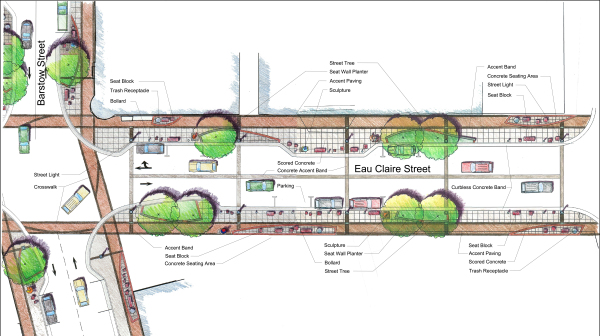
What We Do
Master Planning
-
 +
+ -
 +
+ -
 +
+
Master Planning is an interplay and creative thinking process between a multi disciplinary group of professionals and the client and stakeholders. An inclusive and wide reaching approach is essential to the success of a project with the ultimate goal of improved vitality and economic development for the community. Incorporating a public input process will ensure the communities acceptance and project approval. Through the master planning process one can describe the project's impact and influence on the regional landscape. The process will develop a long range plan for phased development and successful project implementation. The end product is a well thought out plan that has community and stakeholder buy in and is graphically depicted in colored plan perspective and landscape imagery.
-
 +
+ -
 +
+ -
 +
+
Urban Design
Urban design is the creation of unique and dynamic space that spans a spectrum of scales from small downtown retail districts to neighborhoods, to large regional areas. It involves the arrangement of many elements including buildings, parking, public spaces, vehicle and pedestrian transportation, utilities and all the amenities that tie these elements together into a unifying theme and pattern. It is the art of making place, creating attraction and stimulating economic development through the process. It is the true application of the three arms of sustainability social equality, economic viability and environmental stewardship. It many times involves a multidisciplinary team that collaborates to solve difficult problems and turn them into limitless opportunities. The final product is an inspirational plan that identifies a program of elements that are arranged to express a unifying theme and pattern, unique and specific to the community and region. Many of the elements involved in the urban design process include; unique and place specific architecture, mixed use development with first floor retail to activate the street, walkable neighborhoods, public gathering places, thematic streetscapes, identifiable commercial centers and the organization and placement of theme base amenities that tie all individual elements together into a continuous expression of theme.
Site Design
-
 +
+ -
 +
+ -
 +
+
Site design begins by examining the surrounding context and determining how the site fits into the regional landscape. This investigation will start to develop themes and patterns that will greatly influence the final design and organization of elements. The site design will celebrate and enhance the best features of the site and turn constraints into positive design elements. Site features will be organized to capture the best views, take advantage of unique on site microclimates and minimize vegetation removal. Buildings will be located so as to balance cut/fill and reduce overall construction costs. The final organization of elements will allow for smooth site circulation for both vehicle and pedestrian and parking will be arranged to have the least impact on the visual aesthetic of the site.
-
 +
+ -
 +
+ -
 +
+
Parks & Recreation
Parks are communities respite from everyday ciaos. They range from lush, green, elaborately landscaped expanses of land to tiny pocket sized vacant lots in the center of urban sprawl. Parks are the places where we meet and hang with friends, celebrate with family or pause for personal contemplation. They have a balance of soft and hardscape, passive and active spaces and a diversity of landscapes and plant species. Parks can cleanse runoff and recharge water system. They can be shelters in the storm or the place to bask in blue bird sunny days. Parks are essential to our everyday lives. When designed correctly, parks can inspire creativity and thought, evoke an array of emotions and simply bring you back to nature.
Waterfront Planning
-
 +
+ -
 +
+ -
 +
+
Over the past few decades we have been slowly taking back our urban waterfronts. For years our rivers and lakes have been dominated by industrial buildings. Now known as the Rust Belt, once productive industries that line our valuable waters, have departed or moved on, leaving sitely abandoned buildings. Through assistance from federal grants and agencies, these buildings are slowly being removed allowing for new development to occur that opens up views to the water and embraces the people attracting importance of water. Today's waterfront development includes river walks and strolling paths, lushly landscaped open green spaces, opportunities to be near and touch the water, to fish or launch a canoe. They become places to celebrate, to hold concerts or festivals or provide space for daily farmers markets. People desire to live by the water so now we build or buildings facing out to embrace it. We no longer turn our back to the water but now happily sit on our verandas or patios and smile at its constantly changing beauty.
-
 +
+ -
 +
+ -
 +
+
Streetscape
A streetscape is more than just a road, parking and sidewalks but rather a blank canvas that when activated, can be a place that is a regional attraction for patrons to shop, congregate, eat and be entertained. A streetscape can express a community’s unique features and history and also become a profitable economic driver. Streetscapes can be classified into three types with an organization of elements and applied patterns unique to each type.
Commercial
Residential
Local/Historical Retail